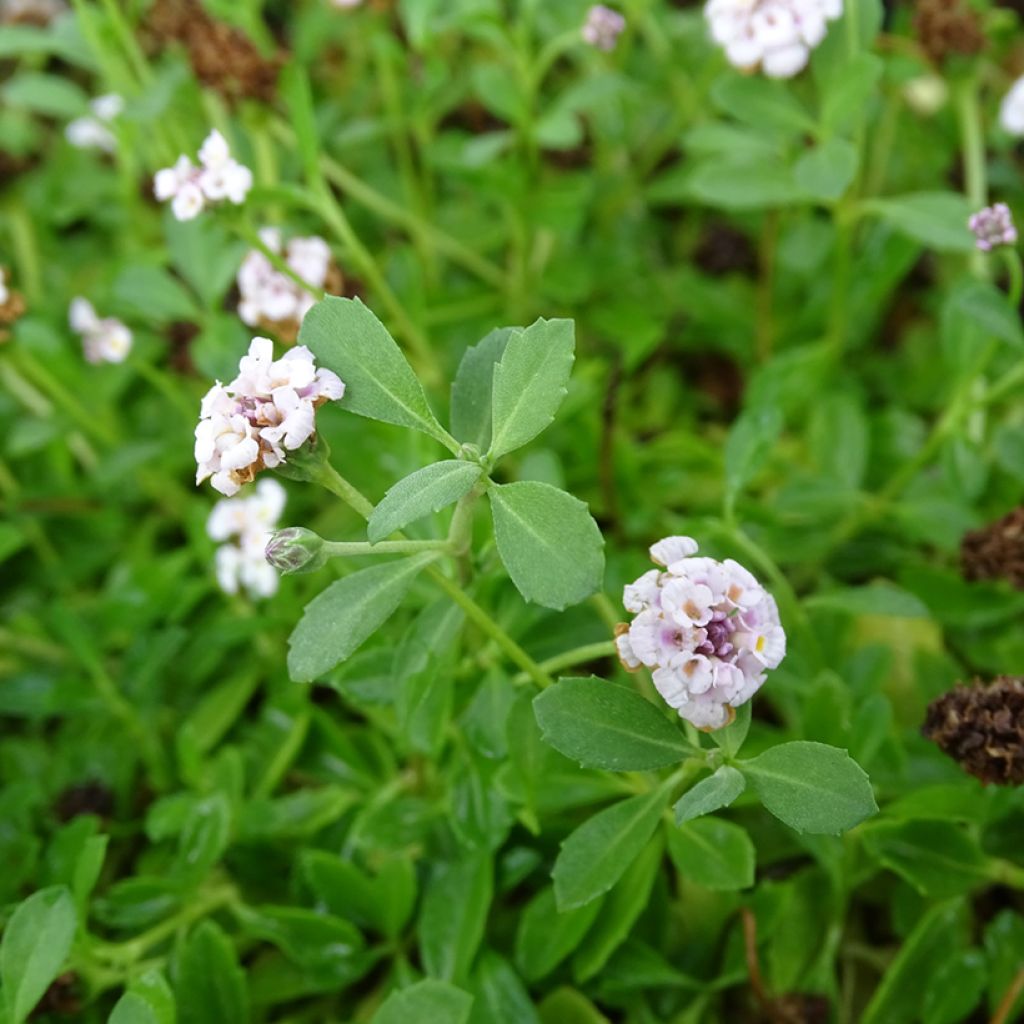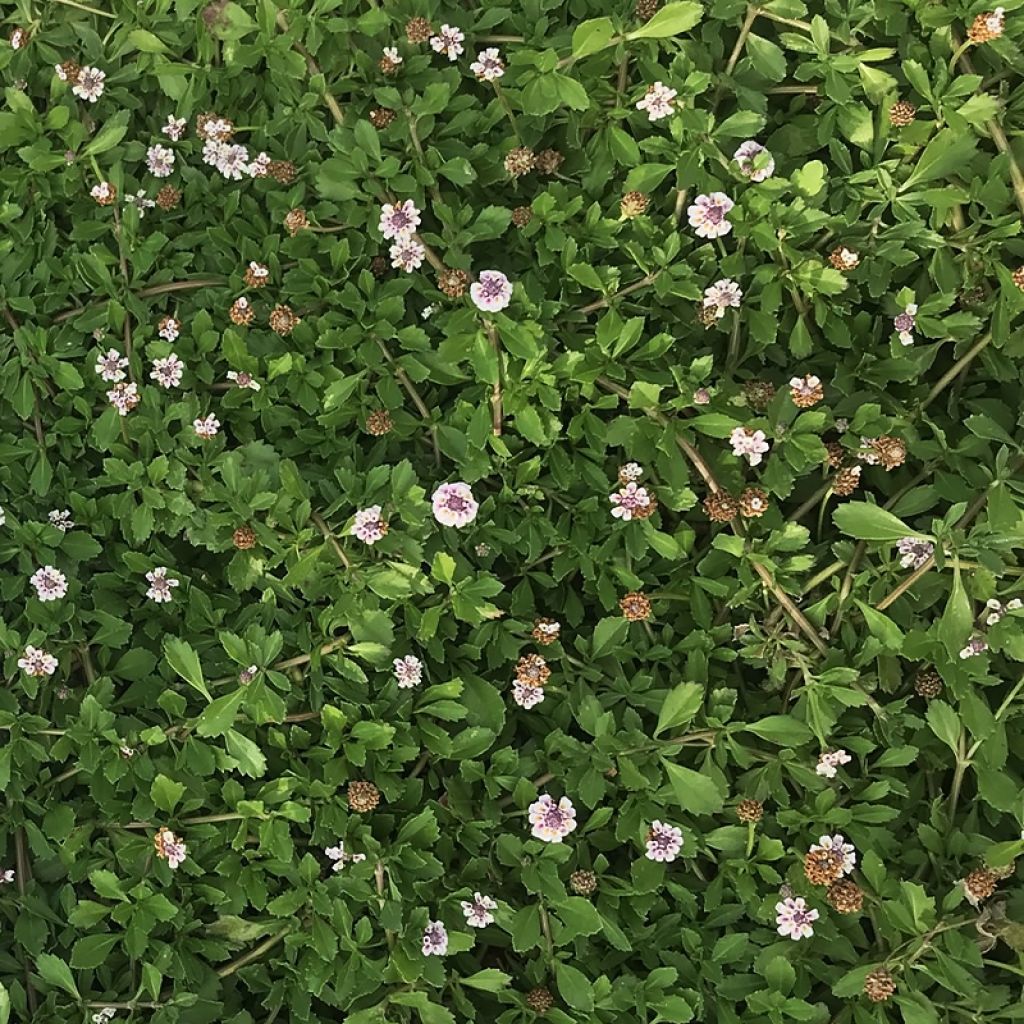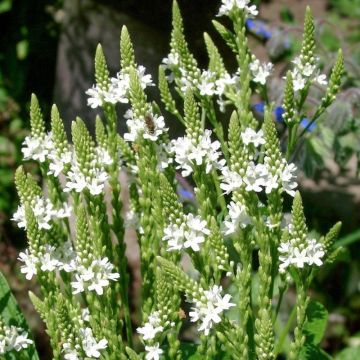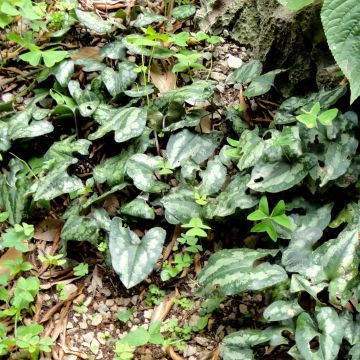

Phyla nodiflora - Capeweed


Phyla nodiflora - Capeweed


Phyla nodiflora - Capeweed


Phyla nodiflora - Capeweed


Phyla nodiflora - Capeweed


Phyla nodiflora - Capeweed
Phyla nodiflora - Capeweed
Phyla nodiflora
Capeweed, Creeping Vervain, Turkey tangle, Matgrass, Carpet Grass
Excellent little groundcover plant, 5 cm tall, with very pretty and small flowers that really enliven the green mass of foliage. A plant that spreads quickly. Thank you to Promesses de Fleurs for introducing me to it in an article.
Anne Marie, 18/12/2025
Special offer!
Receive a €20 voucher for any order over €90 (excluding delivery costs, credit notes, and plastic-free options)!
1- Add your favorite plants to your cart.
2- Once you have reached €90, confirm your order (you can even choose the delivery date!).
3- As soon as your order is shipped, you will receive an email containing your voucher code, valid for 3 months (90 days).
Your voucher is unique and can only be used once, for any order with a minimum value of €20, excluding delivery costs.
Can be combined with other current offers, non-divisible and non-refundable.
Home or relay delivery (depending on size and destination)
Schedule delivery date,
and select date in basket
This plant carries a 12 months recovery warranty
More information
We guarantee the quality of our plants for a full growing cycle, and will replace at our expense any plant that fails to recover under normal climatic and planting conditions.

Would this plant suit my garden?
Set up your Plantfit profile →
Description
Phyla nodiflora, also known as Lippia nodiflora or Lippia repens, is one of the best alternatives to a grass lawn in dry soils, even in heavily trafficked areas. This small perennial quickly forms extensive, very low-growing mats with foliage that is more or less evergreen depending on the climate. It is remarkably dense, and of a soft grey-green hue. In spring, countless small clusters of lilac-pink flowers appear, which bees adore. They often continue to bloom until September. It is a truly undemanding plant, but its hardiness can sometimes be challenged in colder regions. It thrives in both full sun and partial shade, in well-drained soil.
Phyla nodiflora is a small perennial widely spread in the eastern Mediterranean Basin and Asia Minor, as well as in many regions with a dry and hot subtropical climate. It is a close relative of verbenas, sharing its membership in belonging to the verbena family. The plant, usually deciduous but sometimes evergreen in mild climates, quickly forms extensive mats that can reach heights of 1 to 10 cm (0.5 to 4in) depending on moisture and shade conditions, covering an area of 1 square metre or even more. The stems root at each node where they touch the ground, colonising all available space. The very nectar-rich flowers appear in May-June and sometimes continue throughout the summer if the soil remains somewhat moist. The small pale pink to lilac flowers are in 1 to 3 cm (0.5 to 1in) diameter clusters, carried by very short stems just above the foliage. When the summer is very dry, the foliage partially dries out, but this is not fatal to the plant, which will green up again with the first rains. It is hardy to -10 to -12°C (14 to 10.4°F).
Plant Phyla nodiflora en masse in a small area where you would like a lawn but the soil is very dry. This plant tolerates heavy foot traffic and can go without watering for 2 to 3 months. In this use, it can be paired with other creeping perennials with similar growth cycles, such as Achillea crithmifolia, Frankenia laevis, Zoysia tenuifolia, or Dichondra repens. It can also be planted on top of walls or in the gaps between their stones, in rock gardens of course, but also along the edge of a staircase, accompanied by Erigeron karvinskianus, thymes, or dwarf artemisias, for example. It also pairs very well with perennials and shrubs for dry soil on a slope (lavenders, cistus, rosemary, brooms, cerastostigma, valerian), and protects them from weeds.
Report an error about the product description
Phyla nodiflora - Capeweed in pictures






Flowering
Foliage
Plant habit
Botanical data
Phyla
nodiflora
Verbenaceae
Capeweed, Creeping Vervain, Turkey tangle, Matgrass, Carpet Grass
Mediterranean
Other Verbena - Vervain
View all →Planting and care
Lippia nodiflora can be planted in full sun or partial shade, in any well-drained soil. Plant four young plants per square metre to sufficiently cover the ground in one year, or eight plants per square metre to achieve groundcover more quickly. It is undemanding in terms of soil type, and can tolerate limestone as well as sea spray. Its hardiness does not exceed -10 to -12°C (14 to 10.4°F). This plant can withstand a lack of water, but it will be greener and have more flowers with watering every 10 to 15 days in summer. A slow-release fertiliser applied twice a year will enhance its already very fast growth. The mat can be mowed once a year, after flowering or during it if the presence of bees is bothersome. Due to the abundance of bees, it is preferable to plant this Phyla in an area away from children's play areas and swimming pools.
Planting period
Intended location
Care
-
, onOrder confirmed
Reply from on Promesse de fleurs
Similar products
Haven't found what you were looking for?
Hardiness is the lowest winter temperature a plant can endure without suffering serious damage or even dying. However, hardiness is affected by location (a sheltered area, such as a patio), protection (winter cover) and soil type (hardiness is improved by well-drained soil).

Photo Sharing Terms & Conditions
In order to encourage gardeners to interact and share their experiences, Promesse de fleurs offers various media enabling content to be uploaded onto its Site - in particular via the ‘Photo sharing’ module.
The User agrees to refrain from:
- Posting any content that is illegal, prejudicial, insulting, racist, inciteful to hatred, revisionist, contrary to public decency, that infringes on privacy or on the privacy rights of third parties, in particular the publicity rights of persons and goods, intellectual property rights, or the right to privacy.
- Submitting content on behalf of a third party;
- Impersonate the identity of a third party and/or publish any personal information about a third party;
In general, the User undertakes to refrain from any unethical behaviour.
All Content (in particular text, comments, files, images, photos, videos, creative works, etc.), which may be subject to property or intellectual property rights, image or other private rights, shall remain the property of the User, subject to the limited rights granted by the terms of the licence granted by Promesse de fleurs as stated below. Users are at liberty to publish or not to publish such Content on the Site, notably via the ‘Photo Sharing’ facility, and accept that this Content shall be made public and freely accessible, notably on the Internet.
Users further acknowledge, undertake to have ,and guarantee that they hold all necessary rights and permissions to publish such material on the Site, in particular with regard to the legislation in force pertaining to any privacy, property, intellectual property, image, or contractual rights, or rights of any other nature. By publishing such Content on the Site, Users acknowledge accepting full liability as publishers of the Content within the meaning of the law, and grant Promesse de fleurs, free of charge, an inclusive, worldwide licence for the said Content for the entire duration of its publication, including all reproduction, representation, up/downloading, displaying, performing, transmission, and storage rights.
Users also grant permission for their name to be linked to the Content and accept that this link may not always be made available.
By engaging in posting material, Users consent to their Content becoming automatically accessible on the Internet, in particular on other sites and/or blogs and/or web pages of the Promesse de fleurs site, including in particular social pages and the Promesse de fleurs catalogue.
Users may secure the removal of entrusted content free of charge by issuing a simple request via our contact form.
The flowering period indicated on our website applies to countries and regions located in USDA zone 8 (France, the United Kingdom, Ireland, the Netherlands, etc.)
It will vary according to where you live:
- In zones 9 to 10 (Italy, Spain, Greece, etc.), flowering will occur about 2 to 4 weeks earlier.
- In zones 6 to 7 (Germany, Poland, Slovenia, and lower mountainous regions), flowering will be delayed by 2 to 3 weeks.
- In zone 5 (Central Europe, Scandinavia), blooming will be delayed by 3 to 5 weeks.
In temperate climates, pruning of spring-flowering shrubs (forsythia, spireas, etc.) should be done just after flowering.
Pruning of summer-flowering shrubs (Indian Lilac, Perovskia, etc.) can be done in winter or spring.
In cold regions as well as with frost-sensitive plants, avoid pruning too early when severe frosts may still occur.
The planting period indicated on our website applies to countries and regions located in USDA zone 8 (France, United Kingdom, Ireland, Netherlands).
It will vary according to where you live:
- In Mediterranean zones (Marseille, Madrid, Milan, etc.), autumn and winter are the best planting periods.
- In continental zones (Strasbourg, Munich, Vienna, etc.), delay planting by 2 to 3 weeks in spring and bring it forward by 2 to 4 weeks in autumn.
- In mountainous regions (the Alps, Pyrenees, Carpathians, etc.), it is best to plant in late spring (May-June) or late summer (August-September).
The harvesting period indicated on our website applies to countries and regions in USDA zone 8 (France, England, Ireland, the Netherlands).
In colder areas (Scandinavia, Poland, Austria...) fruit and vegetable harvests are likely to be delayed by 3-4 weeks.
In warmer areas (Italy, Spain, Greece, etc.), harvesting will probably take place earlier, depending on weather conditions.
The sowing periods indicated on our website apply to countries and regions within USDA Zone 8 (France, UK, Ireland, Netherlands).
In colder areas (Scandinavia, Poland, Austria...), delay any outdoor sowing by 3-4 weeks, or sow under glass.
In warmer climes (Italy, Spain, Greece, etc.), bring outdoor sowing forward by a few weeks.



















































